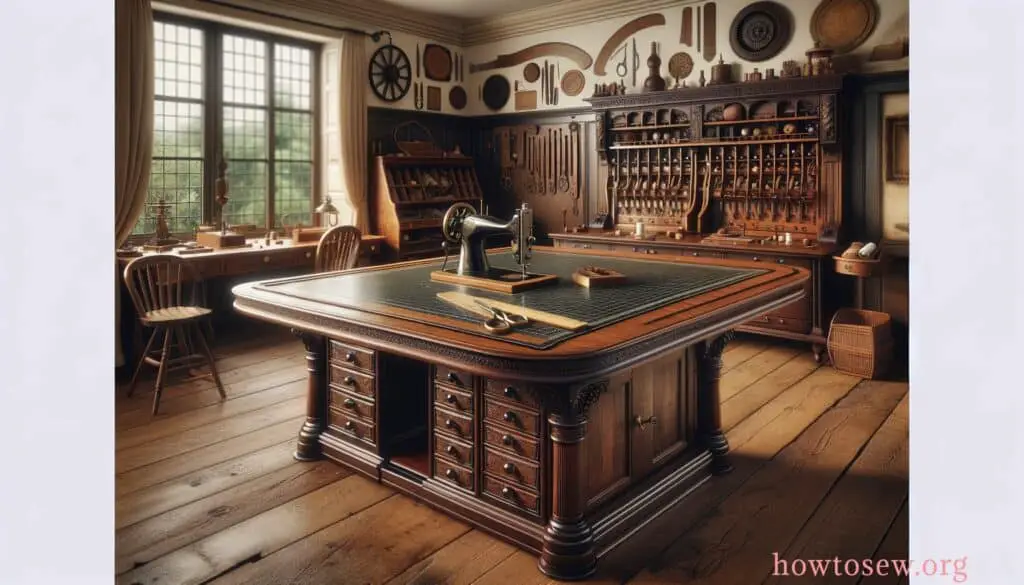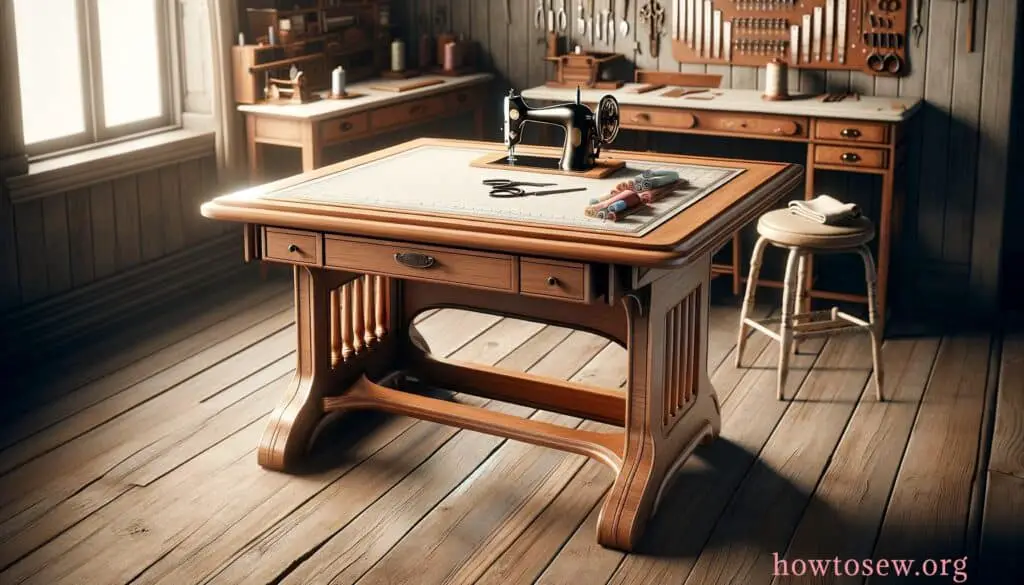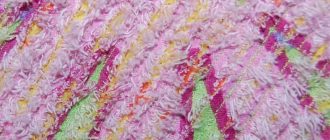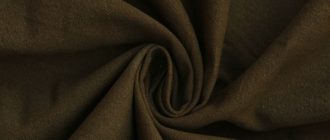Introduction
The tapestry of textile arts is rich with innovation, and at its heart lies the evolution of fabric cutting tables.
These essential tools have undergone a remarkable transformation, adapting to the changing needs of sewers and quilters throughout history.
From ancient civilizations to modern technology, the story of fabric-cutting tables is a journey of ingenuity and creativity, shaping how we approach sewing and quilting.

Early Beginnings
Origin of Quilting and Fabric Cutting
Long before the term ‘quilting’ was coined, ancient civilizations mastered weaving and cutting fabrics.
The invention of linen in Egypt around 5000 B.C. marked the beginning of a new era in textile arts.
Here, some of the earliest cutting tools, resembling modern scissors, were developed, revolutionizing how fabrics were handled.
Global Spread of Techniques
As these early techniques spread, they took on new forms and intricacies.
Initially found in Egypt, the scissors were soon paralleled by similar tools discovered in ancient China.
This simultaneous development across different civilizations laid the foundation for various fabric-cutting methods.
The Role of Cutting in Early Textiles
Fabric cutting in these early days was not just a functional task but a skill that required precision and artistry.
The quality of the cut directly influenced the aesthetics and functionality of the clothing and textiles.
Middle Ages to Renaissance
The Crusades’ Influence
The Crusades were pivotal in introducing quilting and fabric cutting to Europe.
Inspired by the quilted clothing of Muslim warriors, European soldiers brought back these techniques, which soon flourished across Italy, France, and England.
European Quilting Evolution
In Europe, quilting transcended its utilitarian origins and evolved into an art form.
Quilted clothing and decorative panels became symbols of craftsmanship and luxury.
This period saw a surge in the development of fabric-cutting techniques, accommodating the complexity of European designs.
Legacy and Preservation
One of the most notable relics of this era is the 14th-century Sicilian bedquilt, a masterpiece of quilting and cutting artistry.
Preserved in the Victoria and Albert Museum, it is a tangible link to the rich history of fabric cutting.

Colonial Era
Quilting in the New World
As European settlers crossed the Atlantic, they carried with them their quilting traditions.
These techniques melded with local styles in the Americas, giving rise to a distinct American quilting identity.
Cultural Integration and Evolution
In the melting pot of the New World, quilting and fabric cutting absorbed diverse influences.
This era marked the birth of unique American quilting styles with innovative patterns and cutting techniques.
The Earliest American Quilts
The earliest records of American quilts date back to the 17th century, a testament to the enduring nature of quilting and the evolving art of fabric cutting.
20th Century Developments
Persistence of Traditional Methods
Despite technological advances, traditional fabric-cutting methods remained unchanged until the mid-20th century.
Quilters painstakingly used paper templates and scissors, a testament to the enduring nature of these early techniques.
The Need for Innovation
As the textile industry’s demands grew, the limitations of traditional fabric cutting became increasingly apparent.
The need for more efficient, precise cutting methods became a driving force for innovation.
Transition to Modernity
The latter half of the 20th century marked a significant shift in fabric-cutting techniques.
The introduction of new tools and materials heralded the beginning of modern quilting and fabric cutting.

Late 20th Century to Early 21st Century
Rotary Cutters and Mylar Templates
The 1970s and 1980s revolutionized fabric cutting by introducing rotary cutters and Mylar plastic templates.
These tools drastically improved the efficiency and accuracy of fabric cutting, transforming the quilting process.
Advancements in Precision and Efficiency
Using Mylar templates and later acrylic rulers alongside rotary cutters allowed quilters to cut more precisely in less time.
This period marked a significant leap forward in the evolution of fabric-cutting tables.
The Continued Importance of Scissors
Despite these advancements, scissors remained essential for detailed and complex cuts.
Combining traditional and modern techniques continued to define the fabric-cutting landscape.
Modern Innovations
Birth of AccuQuilt
In the late 20th century, a significant innovation emerged with the founding of AccuQuilt.
Inspired by the simple act of cutting cookie dough, Steve Nabity envisioned a cutting machine to revolutionize fabric cutting.
The GO! Cutting Machines
The introduction of the GO! Cutting Machine by AccuQuilt in 2008 was a watershed moment in fabric cutting.
This machine dramatically reduced the time and effort involved in cutting, bringing newfound efficiency and precision to quilting.
A New Era in Fabric Cutting
AccuQuilt’s innovations marked the beginning of a new era in fabric cutting.
Quilters could now easily achieve intricate patterns and complex designs, a far cry from the laborious methods of the past.
Conclusion
The history of fabric cutting tables is a narrative of constant evolution driven by the needs and creativity of textile artists.
Each innovation has opened new possibilities in sewing and quilting, from ancient scissors to modern automated machines.
As we look to the future, the story of fabric-cutting tables continues, promising even more advancements and transformations in this essential aspect of textile arts.





